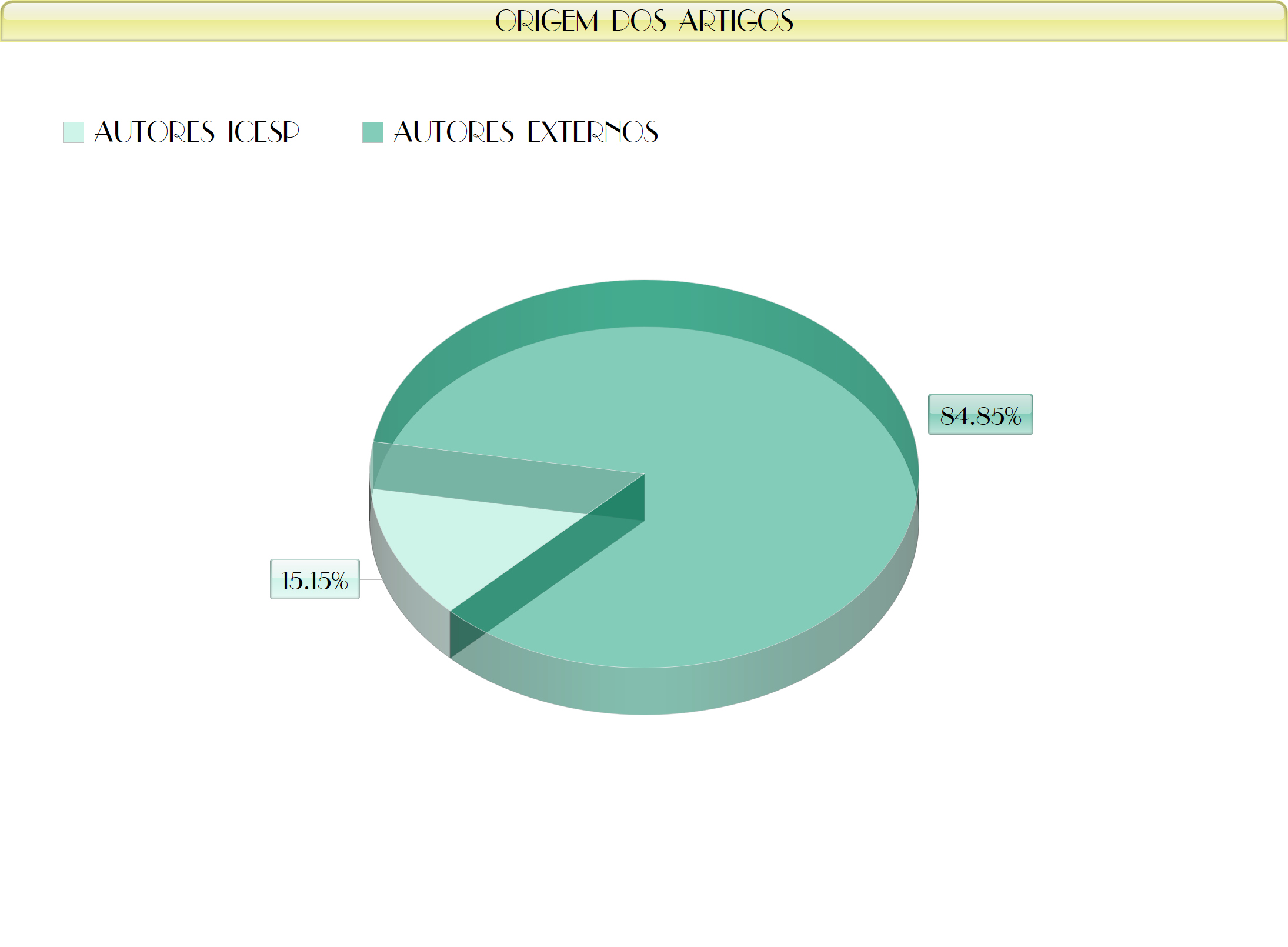Hipoinsuflação pulmonar em pacientes com derrame pleural, vantagens e desvantagens da terapia respiratória com EzPAP®: uma revisão integrativa
Resumo
Objetivo: Analisar as vantagens de desvantagens da terapia respiratória com EzPAP® em pacientes diagnosticados funcionalmente com hipoinsuflação pulmonar. Métodos: a revisão integrativa, conduzida nos meses de março a maio de 2020, as buscas foram realizadas nas bases de dados Pubmed, CAPES e MedLine, no período de 2000-20. Os descritores selecionados foram: Ezpap, atelectasia e função pulmonar, hipoxemia, pressão expiratória positiva final e restrição pulmonar, presentes nos Descritores em Ciências da Saúde (DeCS). Foram avaliados um total de 12 artigos dos quais 9 estudos foram selecionados para compor a revisão. Resultados: A indicação do EzPAP® mostra-se uma alternativa terapêutica para expansão pulmonar, na presença de perda de volumes e capacidades pulmonares por oferecer fluxo inspiratório adicional e pressão positiva expiratória finalo que possibilita reverter áreas colapsadas, estimulando a reabsorção do liquido pleural pelo sistema linfático e para tratar pulmões hipoinsuflados e atelectasiados. Conclusão: Há indicação do uso do EzPAP® para tratamento e correção de atelectasia e hipoinsuflação pulmonar, sobretudo para corrigir hipoxemia e diminuir a dispneia.
PALAVRAS-CHAVE: Derrame Pleural; Atelectasia, Ezpap, função pulmonar.
-------------------------------------------------------------
To analyze how advantages and disadvantages of respiratory therapy with EzPAP® in patients functionally diagnosed with pulmonary hypoinflation. Methods: in this integrative review, conducted from March to May 2020, searches were performed in the Pubmed, CAPES and MedLine databases, in the period 2000-20. The selected descriptors were: Ezpap, atelectasis and pulmonary function, present in the Health Sciences Descriptors (DeCS). A total of 12 articles were evaluated, of which 9 studies were selected to compose the review. Results: The indication of EzPAP® is a therapeutic alternative for lung expansion in patients with Pleural Effusion, in the presence of loss of lung volumes and resources, a device that allows to offer inspiratory flow and positive end-expiratory pressure, which enables reversal of areas previously collapsed, stimulating the reabsorption of pleural fluid by the lymphatic system and restoring adequate function to hypoinflated and atelectatic lungs. Conclusion: There is an indication for the use of EzPAP® for the treatment and correction of atelectasis and pulmonary hypoinflation if necessary with pleural effusion, mainly to correct hypoxemia and reduce dyspnea.
KEYWORDS: Pleural effusion; Atelectasis, Ezpap, Pulmonary Function.
Palavras-chave
Referências
Referências
Pereira CAC - Diretriz de Teste Espirométrico. J Bras de Pneumol 2002, 28(Supl 3).
Schultz, K., D’Aquino, L. C., Soares, M. R., Gimenez, A., & Pereira, C. A. de C. Lung volumes and airway resistance in patients with a possible restrictive pattern on spirometry. J Bras de Pneumol, 2016, 42(5), 341–347.
Umbrello M, Mistraletti G, Galimberti A, Piva IR, Cozzi O, Formenti P. Drainage of pleural effusion improves diaphragmatic function in mechanically ventilated patients. Crit Care Resusc. 2017;19(1):64-70.
Rowley DD, Malinowski TP, Di Peppe JL, Sharkey RM, Gochenour DU, Enfield KB. A Randomized Controlled Trial Comparing Two Lung Expansion Therapies After Upper Abdominal Surgery. Respir Care. 2019;64(10):1181-1192.
Britto R.R., Brant T.C.S., Parreira V.F.; Pressão positiva expiratória nas vias aéreas. Recursos manuais e instrumentais em fisioterapia respiratória. 2 ed. Ver e Ampl. 2014;155-74.
Sperandio, EF Distúrbio ventilatório restritivo sugerido por espirometria: associação com risco cardiovascular e nível de atividade física em adultos assintomáticos. J. bras. pneumol. 2016, vol.42, n.1, pp.22-28.
Omar A., Main E., Rand S - EzPAP®: the effects of increasing gas flow and the alteration of breathing pattern on airway pressures, flows and volume. Physiotherapy, 101, e1141.
Iberl G, Bornitz F, Schellenberg M, Wiebel M, Herth FJ, Kreuter M. Atemtherapie mit Ez-PAP zur Behandlung der dynamischen Überblähung bei Patienten mit schwerer COPD und Lungenemphysem [Respiratory therapy with Ez-PAP for treatment of dynamic hyperinflation in patients with severe COPD and emphysema]. Pneumologie. 2014;68(9):604-612.
Nyland BA, Spilman SK, Halub ME, A Preventative Respiratory Protocol to Identify Trauma Subjects at Risk for Respiratory Compromise on a General In-Patient Ward. Respir Care. 2016;61(12):1580-1587.
Rieg AD, Stoppe C, Rossaint R, Coburn M, Hein M, Schälte G. EzPAP® zur therapie der postoperativen hypoxämie im aufwachraum : erfahrungen mit dem neuen kompaktsystem zum "endexpiratory positive airway pressure" [EzPAP® therapy of postoperative hypoxemia in the recovery room : experiences with the new compact system of end-expiratory positive airway pressure]. Anaesthesist. 2012;61(10):867-874. doi:10.1007/s00101-012-2083-4
Rowley DD, Malinowski TP, Di Peppe JL, Sharkey RM, Gochenour DU, Enfield KB. A Randomized Controlled Trial Comparing Two Lung Expansion Therapies After Upper Abdominal Surgery. Respir Care. 2019;64(10):1181-1192.
Elliott S, Retrospective analysis of the use of EZPAP positive pressure device by respiratory physiotherapists, Journal of ACPRC,2013, Volume 45.
Talley HC, Twiss K, Wilkinson S, Buiocchi E, Lourens G, EZ - PAP in the Postoperative Period: A Pilot Study. J Anesth Clin Res. 2012; 3:236.
Fassone V, Sistema EzPAP® vs fisioterapia tradizionale nei soggetti sottoposti a intervento di cardiochirurgia:studio prospettico, Rivista Italiana di Fisioterapia e Riabilitazione Respiratoria, 2015.
Wiersgalla S - Effects of EZPAP post operatively in coronary artery bypass graft patients, The Science Journal of the American Association for Respiratory Care, 2002.
Silva GA - Derrames Pleurais: Fisiopatologia e Diagnóstico, Revista da Universidade de São Paulo, 1998, 31:208-215.
Malbouisson LMS, Humberto F, Rodrigues RR, Carmona MJC, Auler J, José OC - Atelectasias durante anestesia: fisiopatologia e tratamento. Rev. Bras. Anestesiol. 2008; 58( 1 ): 73-83.
Chung F, Mezei G, Tong D. Pre-existing medical conditions as predictors of adverse events in day-case surgery. Br J Anaesth. 1999;83(2):262-270.
Woodring JH, Reed JC. Types and mechanisms of pulmonary atelectasis. J Thorac Imaging. 1996;11(2):92-108.
Guizilini S, Gomes WJ., Faresin SM., Bolzan DW., Alves FA., Catani R - Avaliação da função pulmonar em pacientes submetidos à cirurgia de revascularização do miocárdio com e sem circulação extracorpórea, Braz J Cardiovasc Surg 2005; 20(3): 310-316.
Dureuil B, Cantineau JP, Desmonts JM. Effects of upper or lower abdominal surgery on diaphragmatic function. Br J Anaesth. 1987;59(10):1230-1235.
Oliveira JF, Mello CQ. Rodrigues RS., Boechat AL., Conde MB., Menezes SLS - Effect of continuous positive airway pressure on fluid absorption among patients with pleural effusion due to tuberculosis. Rev. bras. Fisioter Epub Apr 30, 2010.
Verweel E, Noble Jl, Zoelen CG, Maat A, Thijsse W, Gerritsen P - Failure to wean caused by cryptogenic fibrosing pleuritis and bilateral lung trapping: case report. Rev. bras. ter. intensiva. 2007; 19( 4 ): 504-508.
Timo I. Fisiologia do envelhecimento. In: Andy Petroianu; Luiz Gonzaga Pimenta. (Org.), Cirurgia & Clínica Geriátrica 1999; 1:54-64.
Apontamentos
- Não há apontamentos.
Revista Brasileira de Pesquisa em Ciências da Saúde - RBPeCS - ISSN: 2446-5577
Indexadores:













